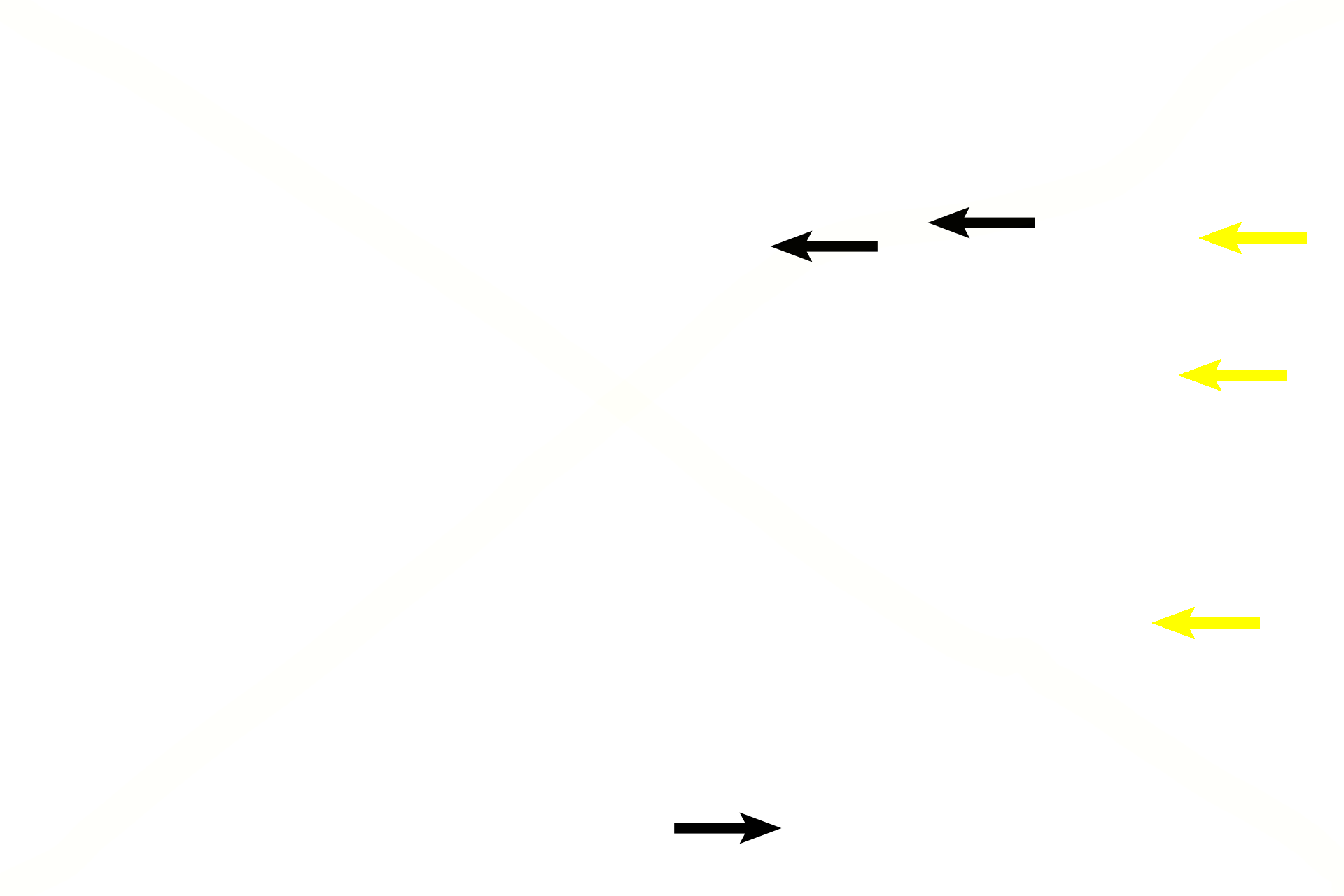
Bone: resorption
A cross section through the diaphysis demonstrates bone remodeling in the interior of a bone. A bone remodeling unit is columnar in shape and consists of a cutting tip, where bone is resorbed (resorption canal), and a closing end, where osteoblasts deposit concentric lamellae, filling in the resorption canal with an osteon. 200x

Endosteum >
An endosteum lines all interior bony surfaces. The cells in this layer are readily visible in the bony interior (black arrows), but are difficult to differentiate at the marrow surface (yellow arrows) from the cells of the adjacent red marrow to the right.

Osteons >
Osteons, or Haversian systems, are identified by their concentric lamellae and central Haversian canals.

Resorption canals >
Cross sections of two resorption canals are shown. Resorption canals have irregular outlines, contain a blood vessel, and are lined with an endosteum containing osteoclasts; they have no concentric lamellae. The canals shown here form the eroding tip of columnar-shaped remodeling units. Remodeling units are oriented parallel to the long axis of the bone.

Forming osteons >
Forming osteons comprise the closing end of a remodeling unit, filling in the space created by resorption at the cutting tip of the unit. The large diameter of the Haversian canals in the center of these osteons indicates that these osteons are still in the formative stage.

Next image >
The next image is similar to the area enclosed by the rectangle.